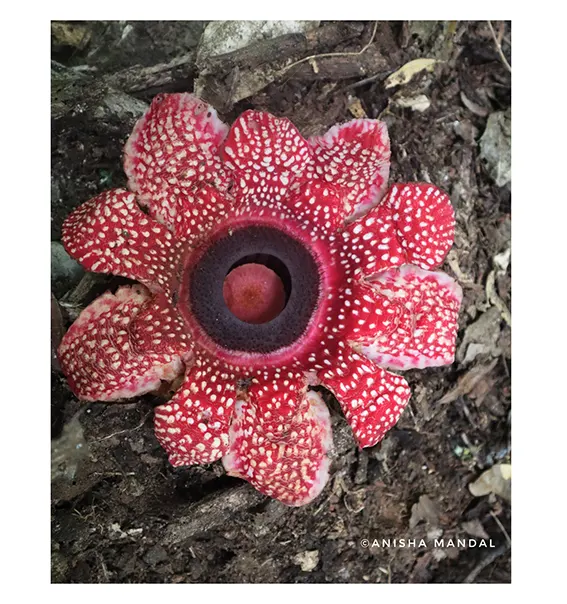[ Prem Chetry ]
BOMDILA, 27 Dec: A team of researchers from Bengaluru, Karnataka, has discovered Sapria himalayana Griffith – an endoparasitic, rare, and endangered plant – in the Eaglenest Wildlife Sanctuary (EWS) in Singchung subdivision in West Kameng district.
The team from the Centre for Ecological Sciences of the Indian Institute of Science, Bengaluru, comprising Anisha Mandal, Aman Bishwakarma, Kabir Pradhan and Rohit Rai, assisted by dedicated staff Dibi Soma Monpa and Karma Wangdi Monpa from the EWS, made the discovery.
The eastern Himalayan region is renowned for its exceptional and abundant floral and faunal biodiversity, harbouring numerous endemic plant species. Among them, Sapria himalayana Griffith was first discovered in the Mishmi Hills of Arunachal Pradesh in 1836.
Despite its discovery nearly two centuries ago, the species remains poorly understood. While some recent studies have begun to explore the genetics and demography of this species, there is still a significant knowledge gap in the understanding of the life history patterns of this parasitic plant, as per a report published in the Journal of Threatened Taxa.
This discovery has added to the distribution of Sapria himalayana in the EWS, the report said, adding that around 21 flowers were scattered on the forest floor, spanning various developmental stages, from buds to flower maturation, including desiccated flowers. The bud emerges from the roots of Tetrastigma sp (host plant).
“One of the primary challenges in conducting extensive research on the intriguing Himalayan sapria is its infrequent and unpredictable flowering patterns. Therefore, understanding these aspects (flowering phenology and enigmatic traits) is crucial for further research and preserving this rare species and its hosts in the face of ongoing habitat loss,” the report stated,adding that conducting an annual plant survey in the sanctuary can help identify patterns to unravel these mysteries.



